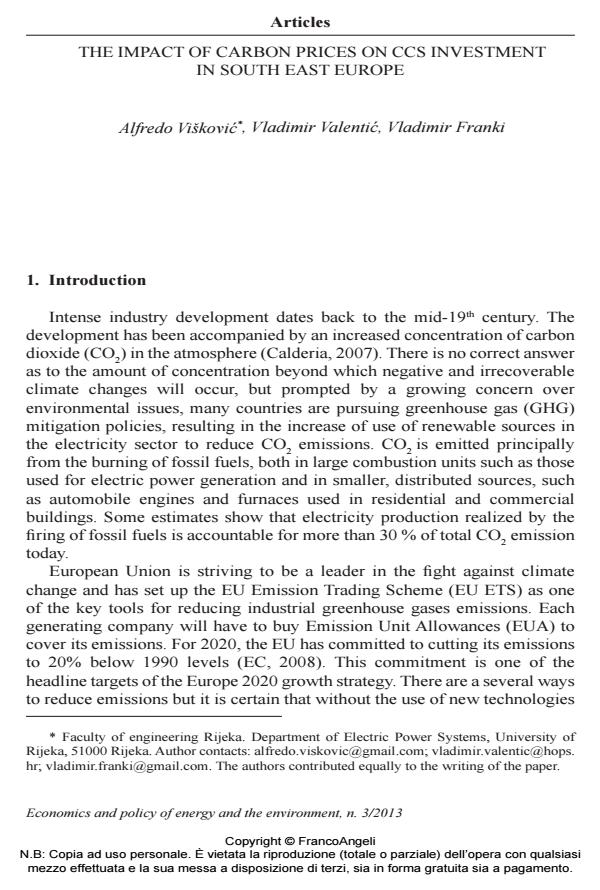The impac t of carbon prices on CCS investment in South East Europe
Journal title ECONOMICS AND POLICY OF ENERGY AND THE ENVIRONMENT
Author/s Alfredo Viskovic, Vladimir Valentic, Vladimir Franki
Publishing Year 2014 Issue 2013/3
Language English Pages 30 P. 91-120 File size 952 KB
DOI 10.3280/EFE2013-003004
DOI is like a bar code for intellectual property: to have more infomation
click here
Below, you can see the article first page
If you want to buy this article in PDF format, you can do it, following the instructions to buy download credits

FrancoAngeli is member of Publishers International Linking Association, Inc (PILA), a not-for-profit association which run the CrossRef service enabling links to and from online scholarly content.
The aim of this paper is to analyze the feasibility of a new entrant power plant based on coal with an installed Carbon Capture and Storage (CCS) system. The plant will be analysed as an Independent Power Producer (IPP) based in Croatia and therefore a part of the South East European Regional Electricity Market (SEE REM) and a member of EU Emission Trading Scheme (EU ETS) obligated to pay for its emissions through Emission Unit Allowances (EUA). Long Run Marginal Cost (LRMC) of the plant will be calculated and certain sensitivities included. By using a market simulator of the region and implementing the model of the plant in question, the performance of the power plant on the electricity market is evaluated and the influences of different emission prices are analyzed. The research results in a prediction of the price of EUA at which a CCS coal-fired power plant becomes economically justified.
Keywords: Carbon Capture and Storage, Independent Power Producer, Emission Trading Scheme, Emission Unit Allowances, Coal Power Plant, South East European Regional Electricity Market
Jel codes: D24
Alfredo Viskovic, Vladimir Valentic, Vladimir Franki, The impac t of carbon prices on CCS investment in South East Europe in "ECONOMICS AND POLICY OF ENERGY AND THE ENVIRONMENT" 3/2013, pp 91-120, DOI: 10.3280/EFE2013-003004